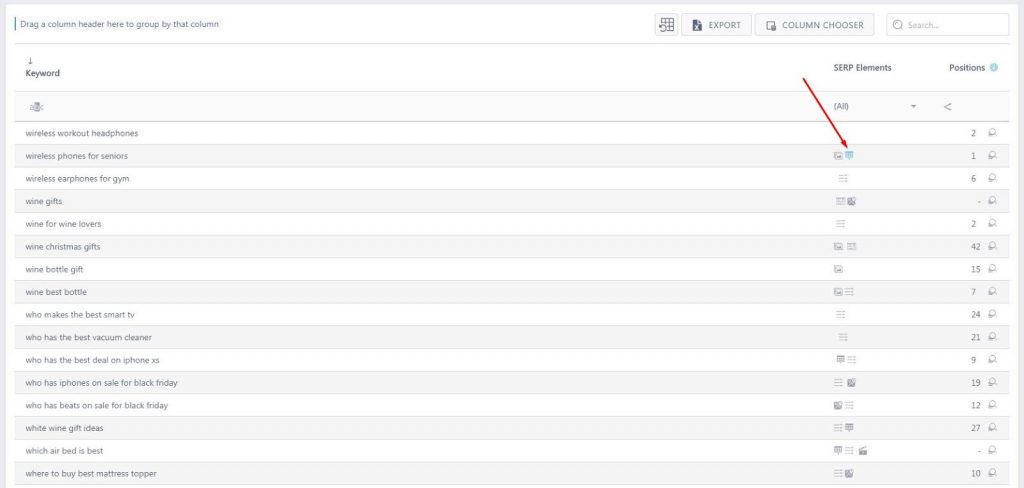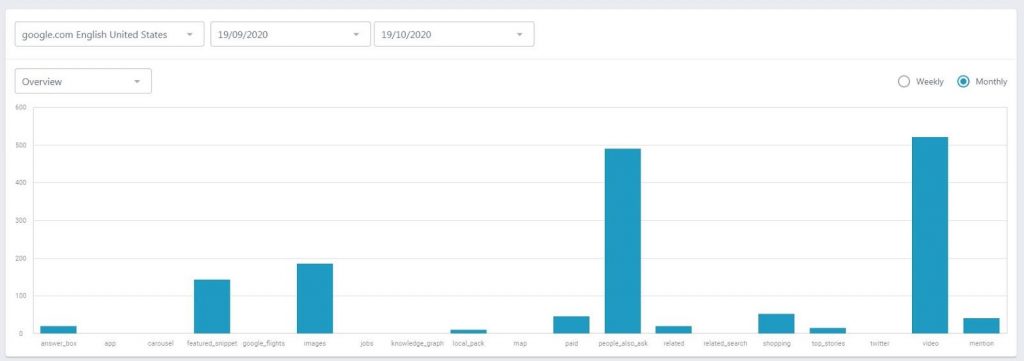5 SEO Trends for 2021: What to Expect in the Upcoming Year
5 November 2020 Leave a comment ALL-HANDS SEO
The SEO world is ever-changing. Many strategies that worked fine just a year ago are irrelevant today, and what is working now may be inappropriate in the future. To thrive in this altering industry, we have to put our fingers on the pulse of events and keep our websites well-optimized for constant search engine updates.
If you wonder what to expect from SEO in the upcoming year, you may find this blog post interesting. Of course, we are not trying to be Nostradamus, but we took the liberty to predict trends for 2021 and prepare you for possible changes.
So without further ado, let’s start predicting.
#1 User Experience (UX) will be crucial for rankings
Google keeps telling us to optimize for users, not search engines. If we build a website that provides good UX, the search engine will eventually notice it and rank it higher. At least, it should work that way.
Soon, user experience measurement will be at a whole new level. At the end of May 2020, Google announced an upcoming search ranking change that focuses on a user experience on a particular page. This update is supposed to affect millions of websites globally. That is great news for users because the algorithm’s changes will encourage webmasters to improve UX on their sites. As a result, the websites at the TOP of SERP will be much better from a technical perspective.
The update will combine the Core Web Vitals metrics with Google’s existing signals to determine the quality of UX a certain page provides.
Largest Contentful Paint (LCP) measures a page load speed. It marks the spot on the timeline when the page’s main content has loaded. As you can see in the image above, if a page loads faster than 2,5 sec, it’s a good result. If it loads between 2,5 and 4 seconds, that means the page needs improvement. And if it loads longer than 4 seconds, Google perceives it as a bad user experience.
First Input Delay (FID) detects the responsiveness of the page. Simply put, it measures the time from when a user can interact with your content to the time when a browser is able to respond to that interaction. If it’s below 100 milliseconds, Google considers it a good result. If it’s between 100 and 300 milliseconds, the page needs improvements. If it’s above 300 milliseconds, that’s a poor result.
Cumulative Layout Shift (CLS) measures the visual stability of content. It helps in understanding how often the page’s visitors experience unexpected layout shifts. To get a better picture of it, look at the animation below.
As you can see, a user didn’t want to place their order. They tried to click on the “No, go back” button, but an additional element appeared and moved the page down, so the visitor misclicked.
If it happens on a page, Google will conclude that it provides a bad user experience and will rank the page lower.
What you can do about it
Even though Google update is not rolled out yet, you can already track the Core Web Vitals metrics. To do that, download the “Web Vitals” extension for Chrome. It’s intuitive to use and has a user-friendly interface, so try it out when you have time.
Also, don’t forget to check regularly how fast your website’s pages load. You can easily do that with RankActive’s Lighthouse feature. It will provide you with info about your site’s performance for desktop and mobile devices and show you useful tips on improving it.
#2 Voice Search will rock the SEO industry
Let’s face it, we are getting lazy as technologies evolve. In fact, 27% of the global population with access to the internet perform searches using their voice. Over 111 million people use voice assistants in the US alone, and this number is expected to grow over the next years.
Why is voice search so popular?
A possible reason is that saying a query is much easier than typing it. Also, there are many situations when your hands are busy (for example, while cooking), so using your voice is the most comfortable way to search for something.
“Hey Google, is that right?”
In addition to the above, there are approximately 3,5 billion smartphone users in the world, and according to Google CEO Sundar Pichai, 20% of all mobile queries are activated by voice.
The number of mobile devices grows every year, so it’s not far-fetched to suggest that the number of voice searches will rise accordingly.
That’s why if you want your website to be more visible in SERP, you have to start optimizing for Voice Search — the earlier, the better.
How to do it
Optimizing for Voice Search isn’t complicated. Just follow these simple tips:
- use natural language (the way people actually talk) when writing content;
- implement long-tail keywords because voice search queries are usually longer than typed ones;
- start some paragraphs with questions, using “what”, “how”, “why”, “when”, as these words are often used when users perform voice searches;
- make sure your website is mobile-friendly.
By the way, users usually perform voice searches when they want to buy something, find the location of some place, see business working hours, and so on. That brings us to the next SEO trend that has all reasons to be huge in 2021.
#3 Google My Business will be a must-have for local businesses
Google My Business is already trendy. According to Safari Digital, 46% of all searches in Google have local intent. In addition to that, more than a billion people use Google Maps every month, and many of them do that to find businesses nearby, check their ratings, read customers’ reviews, find their contact information, and so on.
It’s safe to say that COVID-19 has played its part in this. During the pandemic, people are searching for local establishments near them even more actively. They are checking if businesses are still open, if their open hours have changed, or if the way they work has altered. Unfortunately, the pandemic is likely to continue growing in 2021, so is the number of searches with local intent.
Google My Business helps business owners to inform their customers about any recent changes in their working routine. This tool is extremely handy for everyone who has a company with a physical location and wants to be found by people easily. If you have one, we strongly recommend creating a Google My Business account.
How to optimize for Google My Business
First of all, you need to create an account, claim your business, and verify it. You have to wait up to three business days until Google reviews it. Once your business is verified and its location is established, do the following:
- choose a relevant category;
- add high-quality images;
- provide correct contact information;
- add open hours;
- write a complete, informative description;
- encourage users to leave reviews and answer them on time;
- add new photos regularly;
- share business posts to announce new services or products;
- set up messaging with your clients;
- edit your information as soon as any changes happen.
You can even create a website with Google My Business website builder if you don’t have one. Also, after creating an account, consider making videos because:
#4 Video content will become even more popular
According to OBERLO, 85% of users in the US watched video content monthly in 2020. Moreover, 54% of consumers want to see more videos from brands or businesses they like. If it’s not enough, 87% of marketers say videos have boosted their sites’ traffic, and 81% believe they have also helped increase the average time spent on websites.
The question is: do you leverage video content in your SEO strategy? If not, you better start doing it because the number of videos is growing every year, so is the number of people who watch them. If you consider that YouTube is the second largest search engine, and this platform belongs to Google, that makes even more sense.
A video is a great way to present your product or service to a prospect, spread the word about your brand, increase its awareness, gain more backlinks, and boost traffic. Most people would rather watch a quick video than read an article because the latter is harder and takes a much longer time.
How to use video content in your SEO strategy
The first thing you should do is create a business YouTube channel. Once you succeeded with it, consider the following:
- post videos regularly because YouTube recommends videos from active content makers;
- create high-quality thumbnails to encourage people to click on your videos;
- use your target keywords in the tags, description, and title to make it easier for users to find your content;
- don’t forget to leave a link to your website in the description of every video;
- encourage people to subscribe to your channel and to turn on the notifications by hitting the “bell” button;
- reply to the comments on time to engage with your audience;
- follow YouTube’s Community Guidelines and make sure your content doesn’t violate the policies of this platform.
YouTube is a highly competitive website, but if you manage to succeed on it, your business will flourish.
#5 Google will continue turning into an answer engine
Every search engine aims to satisfy users and provide relevant answers to their queries. Google has gone even further by adding numerous SERP features like answer boxes, knowledge graphs, “people also ask” sections, featured snippets, and other additional elements. They provide quick answers within result pages, so users don’t have to click on websites anymore.
Although it is very convenient for internet users, many website owners don’t like these novelties. The reason is that they steal clicks from their websites. According to Rand Fishkin’s analysis, only 41,45% of all searches result in organic clicks and 48,96% end up with no clicks at all. Guess what to blame? You’re right — SERP features.
While we complain here, Google continues turning itself into an answer engine. We can assume that new SERP features will occur in 2021, and there is nothing you can do to stop this process. Nevertheless, many additional elements are clickable, so it’s always a good idea to optimize for them to make your website more visible in SERP.
How to optimize for SERP features
Google states that there is no way to show up in SERP features purposefully (and in most cases, that is true). However, you can increase your chances by doing the following:
- answer users’ questions in a brief form to have higher chances to appear in the featured snippet (also, place these questions in H2 subheadings);
- use schema markup and tag your products with schema alerts to optimize for rich snippets and make your site more appealing in SERP;
- when writing content, answer related questions to your topic to increase the likelihood of showing up in the “people also ask” section;
- create a Google My Business account and update it regularly to show up in the knowledge graph;
- add high-quality images to your content, specify their title and alt tags to have higher chances to appear in the “Images” section.
By the way, you can track which SERP features your website is already showing up in. To do that, use RankActive’s SERP Supervisor. Select the desired project and search engine to discover your website’s visibility in extra SERP elements. The icons of features you’re already dominating are highlighted in blue.
This tool will also show you which features are available in SERP for the keywords you’ve added to your project. By looking at the graph, you can easily define the competitiveness of SERP elements. Just move your mouse to the desired column, and you will see the number of keywords showing up for this element.
In addition to that, you can add competitors to your project to see which SERP elements they’re dominating. That will enable you to implement their best practices and seize these features from your competitors.
Conclusion
Unfortunately, you can’t optimize your website once and stay on top of SERP forever. SEO is a constant battle that takes a lot of effort and regular improvements. To make sure your website is ready for 2021, go through this checklist:
- measure your website’s user experience by using new Core Web Vitals metrics;
- optimize your site for Voice Search;
- create a Google My Business account if you have a local company with a physical location;
- start making videos to drive more traffic, increase your brand awareness, and get more backlinks;
- optimize your website for existing SERP features and get ready for the new ones.
Start working on SEO now, so your website will have better chances to rank higher in the upcoming year. Also, don’t forget about advanced SEO tools — they will help you simplify the optimization process and track your site’s performance.
Tags: Lighthouse, RankActive, SEO trends, SEO trends for 2021, SERP supervisor, top 5 seo trends, upcoming SEO trends 2021, what to expect from SEO in 2021, what will be trendy in SEO in 2021
Like this article? There’s more where that came from.
- 5 Questions to Ask Yourself Before Paying for Rank Tracking Software
- 5 Serious Mistakes Beginner SEOs Make and How to Fix Them
- Why We Use Google’s New Link Attributes and You Should Too
- Title and Description in 2021: Why Google Rewrites SEOs’ Meta Tags
- What We Should Learn From Google’s “About This Result” Feature










